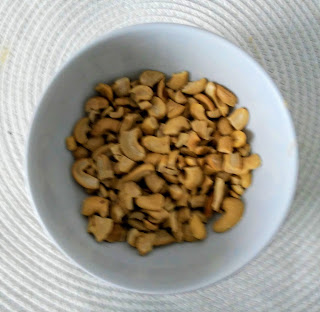Parabéns a todos os papais. No próximo domingo dia 8 de
agosto é o Dia dos Pais. Assim, estamos sugerindo para festejar esse dia uma
deliciosa moqueca de peixe.
No Brasil existem diversas receitas de moqueca. As mais famosas são a baiana e a capixaba. A primeira leva azeite de dendê e leite de coco. Na segundo os temperos são refogados com urucum (colorau) e leva apenas o azeite de oliva.
A receita mostrada a seguir é a nossa receita, leva azeite
de oliva e leite de coco.
Ingredientes:
1,1 kg de badejo cortado em postas (ou qualquer outro peixe
de carne firme e branca como: garoupa, cherne, dourado e a pescada amarela que
é muito usada no Nordeste)
1 lata (400 g) de tomates pelados
1 tomate grande fatiado em rodelas
1 cebola sendo metade picada e a outra metade fatiada
1 pimentão verde sendo metade picado e metade fatiado (pode
usar pimentão vermelho também)
3 dentes de alho amassados
1 garrafinha de leite de coco
Salsa picada
Sal
Pimenta (tabasco ou outra bem picante)
Azeite de oliva
1 xícara de caldo de peixe (opcional, pois pode usar água)
Modo de fazer:
1. Refogar no azeite o alho, a cebola picada e o pimentão
picado.
2. Adicionar o tomate pelado com o líquido e o caldo de
peixe. Refogar 1 a 2 minutos.
3. Adicionar o peixe temperado com sal, o tomate, a cebola e
o pimentão fatiados em camadas alternadas com as postas de peixe.
4. Tampar a panela, baixar o fogo e cozinhar até o peixe
ficar cozido sem desmanchar.
Fish Moqueca Ipanema Pitanga-Style
Congratulations to all dads. Next Sunday August 8th is Father's Day. So, we are suggesting to celebrate this day a delicious fish moqueca, a kind of fish stew.
In Brazil there are several recipes for moqueca (a brazilian fish stew). The most famous are the Bahian and Capixaba (from Bahia and Espírito Santo States). The first takes palm oil and coconut milk. In the second, the spices are sautéed with urucum (a brazilian corante of food) and take only olive oil.
The recipe shown below, which is our recipe, takes olive oil
and coconut milk.
Ingredients:
1.1 kg whiting cut into steaks (or any other firm and white
fish such as: grouper, mahi mahi and yellow hake that is widely used in the
Northeast)
1 can (400 g) peeled tomatoes
1 large tomato sliced
1 onion being half chopped and the other half sliced
1 green bell pepper being half chopped and half sliced (you
can use red bell pepper too)
3 crushed garlic cloves
1 small bottle coconut milk
Chopped parsley
salt
Pepper (tabasco or other very spicy)
Olive oil
1 cup of fish stock (optional, as you can use water)
Directions:
1. Sauté the garlic, the chopped onion and the chopped
pepper in the oil.
2. Add the peeled tomato with the liquid and the fish stock.
Braise 1 to 2 minutes.
3. Add the fish seasoned with salt, the tomato, the onion
and the bell pepper sliced in alternating layers with the fish slices.
4. Cover the pan, lower the heat and cook until the fish is
cooked without breaking up.







































